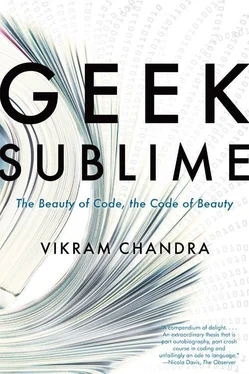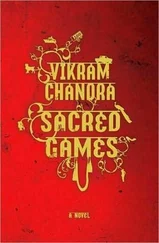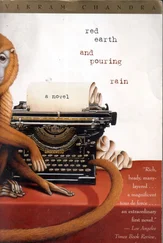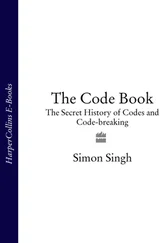Rotter, Andrew J. “Gender Relations, Foreign Relations: The United States and South Asia, 1947–1964.” The Journal of American History 81, no. 2 (1994): 518–42.
Sanderson, Alexis. “Purity and Power among the Brahmans of Kashmir.” The Category of the Person: Anthropology, Philosophy, History (1985): 190–216.
______. “Śaivism and the Tantric Traditions.” The World’s Religions (1988): 660–704.
Saxena, Vinay, Parul Saxena, and Kuldeep Pandey. “Panini’s Grammar in Computer Science.” Recent Research in Science and Technology 3, no. 7 (2011): 109–11.
Savoia, Alberto. “Beautiful Tests.” In Beautiful Code: Leading Programmers Explain How They Think , edited by Andy Oram and Greg Wilson, loc. 2958–3491. Sebastopol, CA: O’Reilly Media, 2007. Kindle edition.
Scheffer, Lou. “Programming in Malbolge.” Accessed June 11, 2013. http://www.lscheffer.com/malbolge.shtml.
Schelling, Andrew. The Cane Groves of Narmada River: Erotic Poems from Old India. San Francisco: City Lights Books, 1998.
Schlesinger, Jill. “JPMorgan Chase Earnings: ‘London Whale’ Cost $5.8 Billion.” CBS Money Watch, July 13, 2012. http://www.cbsnews.com/8301-505123_162-57471697/jpmorgan-chase-earnings-london-whale-cost-$5.8-billion/.
Scott, Alec. “Lessons from Canada’s Silicon Valley Diaspora.” The Globe and Mail , February 23, 2012. http://www.theglobeandmail.com/report-on-business/rob-magazine/lessons-from-canadas-silicon-valley-diaspora/article535544/?service=print.
Shulman, David. “The Buzz of God and the Click of Delight.” In Aesthetics in Performance: Formations of Symbolic Construction and Experience , edited by Angela Hobart and Bruce Kapferer, 43–63. New York: Berghahn Books, 2005.
Silver, Nate. “In Silicon Valley, Technology Talent Gap Threatens G.O.P. Campaigns.” New York Times , November 28, 2012.
“Similarities between Sanskrit and Programming Languages.” uttiSTha bhArata. Accessed August 16, 2013. http://uttishthabharata.wordpress.com/2011/05/30/sanskrit-programming/.
Simon, Reeva Spector. Spies and Holy Wars: The Middle East in 20th-Century Crime Fiction. Austin, TX: University of Texas Press, 2011.
Singh, Sanjay. “New Life, Old Death for Sanskrit in Uttarakhand.” Indian Express , June 29, 2013. Mobile edition. http://m.indianexpress.com/news/new-life-old-death-for-sanskrit-in-uttarakhand/1126773/.
Sivakumar, N. Dude, Did I Steal Your Job? Debugging Indian Computer Programmers. Bridgewater: Divine Tree, 2004.
Skora, Kerry Martin. “Abhinavagupta’s Erotic Mysticism: The Reconciliation of Spirit and Flesh.” International Journal of Hindu Studies 11, no. 1 (2007): 63–88.
______. “The Pulsating Heart and Its Divine Sense Energies: Body and Touch in Abhinavagupta’s Trika Śaivism.” Numen 54, no. 4 (October 1, 2007): 420–58. doi:10.1163/156852707X244298.
Solnit, Rebecca. “Diary.” London Review of Books. Accessed February 7, 2013. http://www.lrb.co.uk/v35/n16/rebecca-solnit/diary.
Spectre, Rob. “Twilio’s Definitive Brogramming Primer.” YouTube video, 14:34. Twilio Conference, uploaded September 22, 2011. http://www.youtube.com/watch?v=Qi_AAqi0RZM.
Srinivas, M. D. “Amarabh&abarratī: Sanskrit and the Resurgence of Indian Civilization.” In Indian Knowledge Systems , vol. 1, 33–48. Shimla: Indian Institute of Advanced Study, 2005.
Staal, J. F. “Context-Sensitive Rules in Pān․ini.” Foundations of Language 1, no. 1 (1965): 63–72.
Stahl, Leslie. “Imported from India.” 60 Minutes. CBS Video. June 22, 2003.
Subbanna, Sridhar, and Srinivasa Varakhedi. “Computational Structure of the Aṣṭādhyāyī and Conflict Resolution Techniques.” In Sanskrit Computational Linguistics , 56–65. Springer, 2009.
Swain, F. “Glowing Trees Could Light up City Streets.” New Scientist 208, no. 2788 (2010): 21.
Swan, Rachel. “Outside the Gates: Unions Versus Big Tech.” SF Weekly , July 3, 2013. http://www.sfweekly.com/2013-07-03/news/apple-google-seiu-sis-manny-cardenas/full/.
“Team: Heidelberg LSL.” Igem.org. Accessed February 3, 2013. http://2012hs.igem.org/Team: Heidelberg_LSL.
Tedd, Eugene. “Hours of Hell and Anguish.” Prairie Schooner (1955): 95–108.
Tharu, Susie, and K. Lalita, eds. Women Writing in India: 600 B.C. to the Present. New York: The Feminist Press at CUNY, 1993.
“The International Obfuscated C Code Contest.” Iocc.org. Accessed February 3, 2013. http://www.ioccc.org/.
Toole, Betty Alexandra. Ada, the Enchantress of Numbers: Poetical Science. Sausalito: Critical Connection, 2010. Kindle Edition.
Torvalds, Linus. “Re: Stable Linux 2.6.25.10.” Gmane.org, July 15, 2008. http://article.gmane.org/gmane.linux.kernel/706950.
Turing, Alan. “On Computable Numbers, with an Application to the Entscheidungs-problem (1936).” In The Annotated Turing: A Guided Tour through Alan Turing’s Historic Paper on Computability and the Turing Machine , by Charles Petzold. Indianapolis: Wiley, 2008.
Urban, Hugh B. The Economics of Ecstasy: Tantra, Secrecy, and Power in Colonial Bengal. New York: Oxford University Press, 2001.
______. The Power of Tantra: Religion, Sexuality and the Politics of South Asian Studies. London: IB Tauris, 2009. Kindle edition.
Varma, Roli. “Computing Self-Efficacy among Women in India.” Journal of Women and Minorities in Science and Engineering 16, no. 3 (2010): 257–74.
______. “Exposure, Training, and Environment: Women’s Participation in Computing Education in the United States and India.” Journal of Women and Minorities in Science and Engineering 15, no. 3 (2009): 205–22.
Wadhwa, Vivek. “The Face of Success, Part I: How the Indians Conquered Silicon Valley.” Inc.com, January 13, 2012. http://www.inc.com/vivek-wadhwa/how-the-indians-succeeded-in-silicon-valley.html.
Wallis, Christopher. “The Descent of Power: Possession, Mysticism, and Initiation in the Śaiva Theology of Abhinavagupta.” Journal of Indian Philosophy 36, no. 2 (2008): 247–95.
Warner, Melanie. “The Indians of Silicon Valley.” Money.cnn.com, May 15, 2000. http://money.cnn.com/magazines/fortune/fortune_archive/2000/05/15/279748/.
West, James L. III, ed. Conversations with William Styron. Limited ed. Jackson: University Press of Mississippi, 1985.
Wezler, Albrecht. “Do You Speak Sanskrit? On a Class of Sanskrit Texts Composed in the Late Middle Ages.” Ideology and Status of Sanskrit: Contributions to the History of the Sanskrit Language , edited by Jan E. M. Houben, 327–46. Leiden: Brill, 1996.
“Whatever Happened to Programming?” News.ycombinator.com, March 3, 2010. http://news.ycombinator.com/item?id=1165623.
White, David Gordon. “Introduction: Tantra in Practice: Mapping a Tradition.” In Tantra in Practice. Princeton: Princeton University Press, 2000.
“Why Sanskrit Is Best Language for Computer?” Yahoo! Answers. Accessed August 16, 2013. http://in.answers.yahoo.com/question/index?qid=20061108053328AAzdnNE.
Winegrad, Dilys, and Atsushi Akera. “A Short History of the Second American Revolution.” University of Pennsylvania Almanac 42, no. 18 (1996): 4–7.
Witzel, Michael. “On the Origin of the Literary Device of the Frame Story in Old Indian Literature.” In Hinduismus Und Buddhismus: Festschrift Für Ulrich Schneider , edited by Harry Falk, 380–414. Freiburg: Hedwig Falk, 1987.
World Economic Forum. Global Gender Gap Report. October 23, 2012. http://www.weforum.org/issues/global-gender-gap.
Читать дальше












